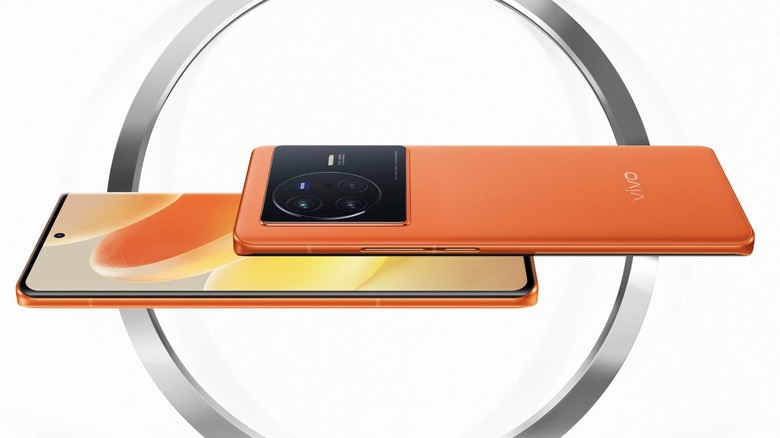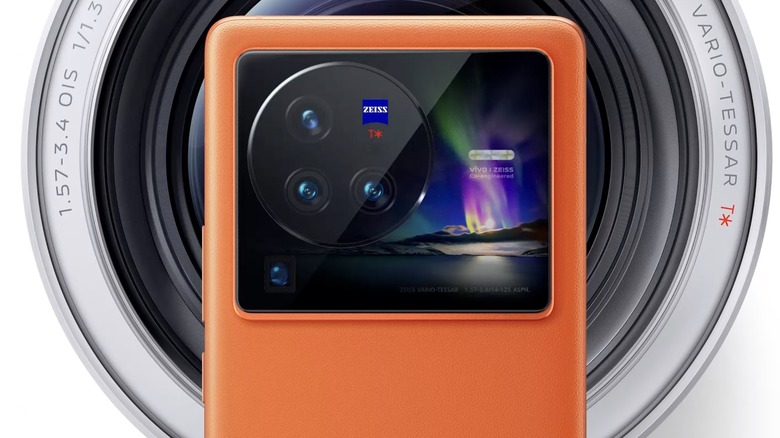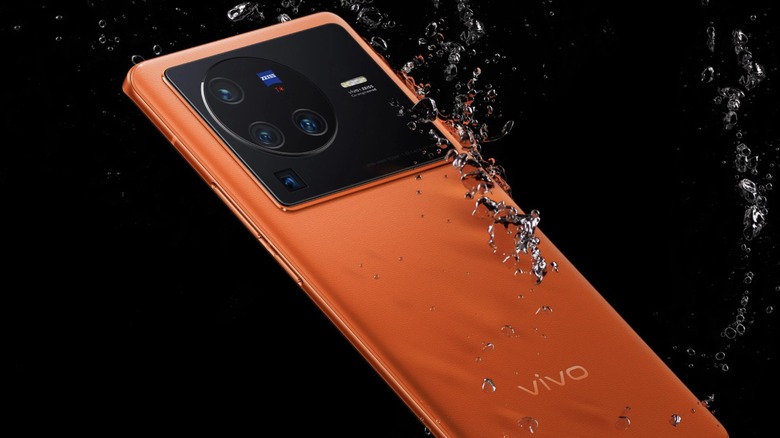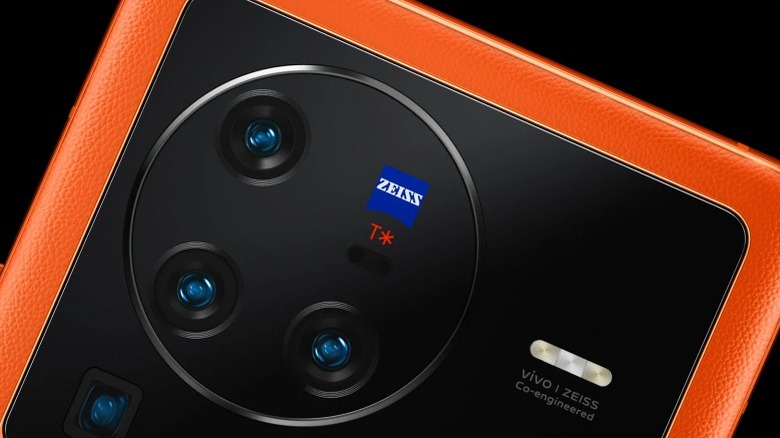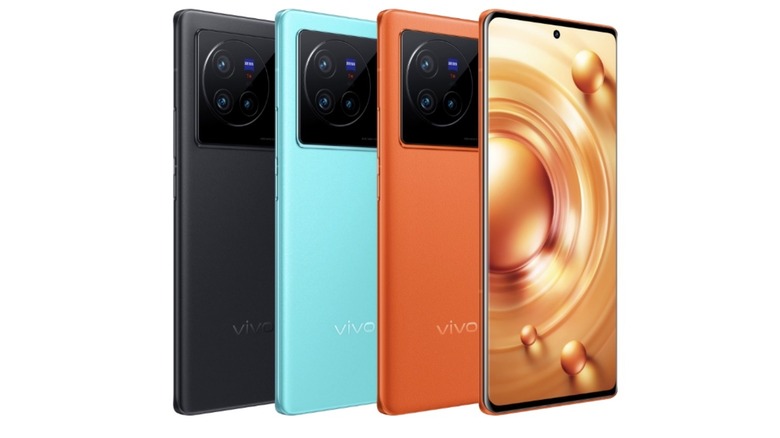Vivo X80 Series: Everything You Wanted To Know
Ever since Vivo launched the X60 series in March 2021, the company seems to have stuck to a bi-annual release cycle for its flagship smartphones. This is why we saw the company also announce the X70 series in the same year. Now that it's been seven months since the X70 series arrived, it was about time Vivo launched the first of its 2022 flagships — and that is precisely what they did earlier today when it launched the Vivo X80 series in China. The two smartphones that are part of the X80 lineup include a 'vanilla' Vivo X80 — and a pricier X80 Pro. It remains to be seen if the company has plans to launch a Pro+ edition of the X80 series.
An interesting thing that Vivo has done this time around is to offer the Pro variant of the phone in two different processor options. The Vivo X80 Pro, therefore, can be purchased either with a Qualcomm Snapdragon 8 Gen 1 chip or a MediaTek Dimensity 9000 inside. The vanilla X80, on the other hand, only comes with the Dimensity 9000 SoC. At first glance, the Vivo X80 lineup seems to be an incremental update over the X70 series in terms of design language — so what's new?
Vivo X80: The best $600 flagship?
The Vivo X80 is a full-fledged flagship phone in its own right and is near-identical to the X80 Pro in terms of overall looks and size. The phone features a 6.78-inch, 2400 x 1080 pixel AMOLED display that supports a 120Hz refresh rate and has a claimed contrast ratio of 8000000:1. This display is near-identical to the display used on the X80 Pro — except for the lower resolution.
As mentioned earlier, the Vivo X80 comes powered by the Dimensity 9000 processor chipset from MediaTek. This chip is arguably among the best smartphone SoCs currently available in Android devices and is a potent rival to the Snapdragon 8 Gen 1 from Qualcomm. The X80 is offered with 8GB and 12GB RAM options with three UFS 3.1 storage options; 128GB, 256GB, and 512GB. Vivo has traditionally refrained from offering microSD card slots on its flagship devices — this continues to be the case with the X80 lineup.
The triple camera setup on the Vivo X80 includes a 32MP, f/2.45 selfie camera (which is also used on the X80 Pro), a 50MP primary camera, a 12MP ultrawide camera, and a 12MP portrait camera. The only camera to support OIS in this configuration is the primary 50MP sensor.
The Vivo X80 gets a 4,500mAh battery that supports 80W fast charging using the company's proprietary charging technology. With support for both 5G and 4G networks, the device claims a VoLTE talk time of over 19 hours in the single SIM mode, going down to a little over 15 hours in dual SIM mode.
Vivo X80 Pro: An incremental update
The more accomplished of the X80 twins, the Vivo X80 Pro — at first glance — looks quite similar to its less expensive sibling. With both devices being offered in similar color options as well, the only visual cue that can help you differentiate between the two is the rear camera array. Unlike the X80's triple camera setup, the more expensive X80 Pro gets an additional camera lens, thereby endowing it with a quad-camera setup at the rear. Less noticeable things include the slightly larger dimensions, thickness, and weight. While not noticeable to the average Joe, the slight differences in size between the two devices mean that the X80 Pro is able to pack a 4,700mAh battery — as opposed to the 4,500mAh unit on the X80. At 6.78-inches, the display used on the X80 Pro is the same size as the X80, except this time around the resolution — at 3200 x 1440 pixels — is much higher. The refresh rate (120Hz) and the contrast ratio (8000000:1) remain unchanged, though.
The processor options are where the X80 Pro gets incrementally more interesting compared to the X80. This Pro version of the X80 comes in a standard variant that uses Snapdragon 8 Gen 1 chip from Qualcomm. For those interested, Vivo also offers them the option to buy the same phone with a Dimensity 9000 chip. It would be interesting to check if there are significant performance differences between the two — although recent benchmarks have shown that the two are evenly matched. Like the vanilla X80, the X80 Pro also comes in 8GB and 12GB RAM options with two storage variants: 256GB and 512GB (both UFS 3.3).
Pro camera power
While the resolution of the primary camera sensor on both the X80 and the X80 Pro seem identical, the Pro uses a newer ISOCELL GNV sensor with a lens that has a different aperture value (f/1.57) compared to the primary camera on the X80. The secondary ultra-wide-angle camera also sees a resolution bump on the X80 Pro, with the device featuring a 48MP sensor. Next up, the X80 Pro features a 12MP telephoto camera that supports 2x zoom, followed by an 8MP periscope camera that can go up to 5x zoom. As mentioned earlier, the selfie camera on both these devices has identical hardware specs.
The larger battery on the Vivo X80 Pro should, on paper, translate to slightly better battery life on the Pro edition. However, with the Pro variant needing to support a higher resolution display, the difference might not be that stark in real-life scenarios.
Pricing and availability
The Vivo X80 series runs Vivo's own OriginOS based on Android 12. The pricing for the different variants of the device include a Vivo X80 with 8GB+128GB at 3699 yuan ($560), a 8GB+256GB variant at 3999 yuan ($610) and two 12GB variants: 256GB at 4399 yuan ($670) and 512GB at 4899 yuan ($745). The Vivo X80 Pro comes in two packs of prices. The Dimensity edition has a 12GB+256GB version available for 5999 yuan ($915), while the 12GB+512GB version will cost you 6699 yuan ($1020). The Snapdragon version of the Pro comes in three sizes: 8GB+256GB for 5499 yuan ($840), 12GB+256GB for 5999 yuan ($915), and 12GB+512GB for 6699 yuan ($1020).
Both phones come in three color options; black, turquoise, and orange. As always, these new smartphones have received a China-first launch. Vivo has traditionally launched its X series devices in several Asian and European countries, and we expect that to happen with the X80 lineup as well. U.S. customers, however, are still out of luck, and the only way for them to get the Vivo X 80 series would be to import them.
